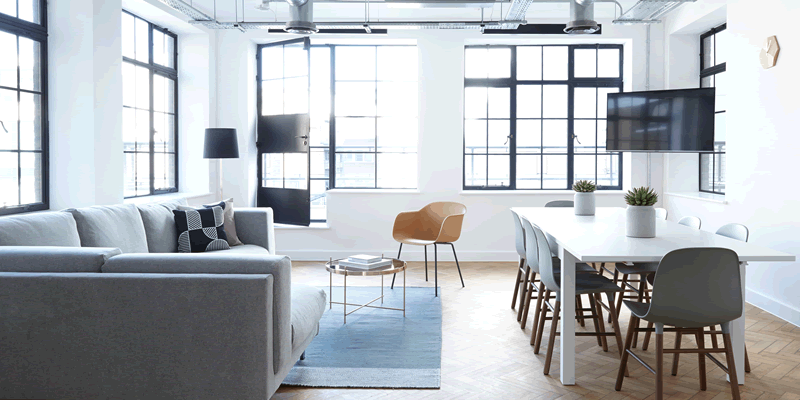Interior design is an art form that has the power to transform the entire look and feel of a space.
It isn’t just about making a room look beautiful; it’s about creating a comfortable and functional space that reflects your personality and style.
It’s no surprise that interior design is becoming more and more important in our lives, as we are spending more time in our homes than ever before.
In this blog, we will explore the importance of interior design in our lives.

Impact On Mental Well Being
Firstly, interior design can have a significant impact on our mental well-being. Our living spaces have a profound effect on our moods, energy levels, and overall sense of well-being.
A cluttered and chaotic space can be stressful and overwhelming, while a well-designed, clean, and organized space can help us feel calm and happy.
For example, the use of natural light, color consultation, and minimalist design can promote a sense of peace and relaxation in a space.
A well-designed home can have a therapeutic effect on our mental and emotional health and provides a sense of comfort during these uncertain times.
Affect Physical Health
Secondly, interior design can significantly affect our physical health. The use of natural materials and eco-friendly designs can create a healthier living environment.
Additionally, proper lighting, ventilation, and air quality are essential considerations for a healthy home.
One of the most significant advantages of interior design is that it allows us to create a space that can cater to our unique physical needs.
For instance, those with mobility issues can benefit from the use of accessible design features like wider doorways, grab bars, and low-threshold showers.
Impact On Productivity
Thirdly, interior design can have a significant impact on productivity. A well-designed space can significantly improve our efficiency and productivity levels.
For instance, the use of a proper desk, chair, and lighting can help create a workspace that is both functional and comfortable.
Additionally, a well-designed workspace can help us to stay focused and increase our concentration levels.
The use of colors can also play an essential role in enhancing productivity levels. Bright colors like yellow, green, and blue can help increase energy levels, while softer, muted tones can promote a calming and relaxing experience.
Social Interactions
Furthermore, interior design plays a significant role in social interactions. The layout of social spaces can enhance or detract from social interactions.
For instance, a well-designed living room can encourage socializing and create an inviting atmosphere for entertaining family and friends.
Similarly, a well-designed dining room can make mealtime more enjoyable and bring people together.
A well-designed space can create a sense of community and improve social interactions, which is essential for our mental and emotional well-being.
Enhance Lifestyle
Another essential aspect of interior design is its ability to enhance our lifestyle.
Interior design allows us to create a space that reflects our personality, style, and preferences.
A well-designed space can make us feel happy, comfortable, and proud of our homes, enhancing our overall quality of life.
Additionally, interior design can help us create a personalized living environment that suits our unique needs and preferences.
Creates Sustainable Living Environment
Moreover, interior design is essential in creating a sustainable living environment. It’s becoming increasingly important to design spaces while considering the environment.
Sustainable design practices can help reduce the impact on the environment by using eco-friendly materials and incorporating energy-efficient designs.
Sustainable interior design can create a living space that is not only good for the environment but also benefits our physical and mental well-being.









